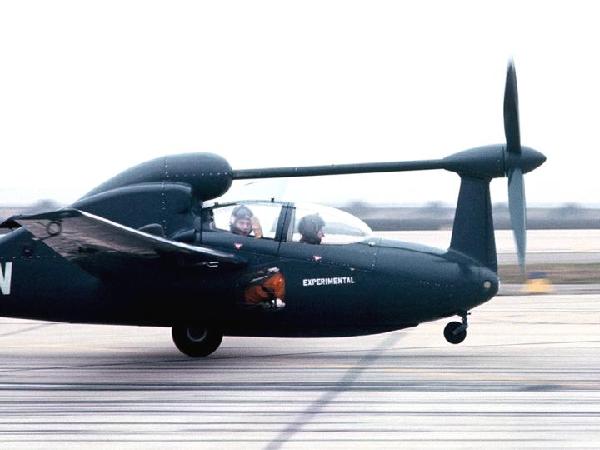Wegens de grote belangstelling van dit draadje..... 



http://www.modelbouwforum.nl/phpBB2/viewtopic.php?t=44045
hierbij een vervolg..... :!: :!: :!:
Er zijn ondertussen veel “VREEMDE” vliegende kisten gemaakt...... 8O 8O 8O 8O 8O 8O 8O
HIERBIJ DE UITDAGING !!!!
FORUMLEDEN met NOSTALGIE......"vreemde" kisten
wat doe je ???????
1. Plaats een foto van een "vreemde" kist in dit draadje en een korte beschrijving, wetenswaardigheid, tip of anekdote
opmerking: het spreekt vanzelf dat de plaatser van het plaatje weet welk toestel het is....

2. de kollega's doen het volgende:
- vermelden de naam (en eventueel de bijnaam van het toestel) en geven enkele bijzonderheden of anekdotes over deze kist
- plaatsen dan een foto van een andere “vreemde” kist in het draadje
uitbreiding van de basisregels:
* Sub A1
regel: rekening houdende met bovenstaande regels is hier dus niet zo, dat wij elkaar even helpen met het plaatsen van een opgave, snel het antwoord verklappen en dan als een stofwolk weer weg zijn......
U bent dus nu verplicht een nieuwe opgave te plaatsen.(behoudens dat op dit ogenblik een brand, aardbeving, overstroming zou uitbreken...)
:wink: :wink: :wink: :wink: :wink:
reden sub 1: dixit Corrien:
Mijnheer Roel (nvdr: roel is moderator van het modelbouwforum), het antwoord is correct
 . U bent dus nu verplicht een nieuwe opgave te plaatsen. (zie verder het draadje op blz 83)
. U bent dus nu verplicht een nieuwe opgave te plaatsen. (zie verder het draadje op blz 83)
:wink: :wink: :wink: :wink: :wink:
*Sub A2
regel: de collega's mogen een bestaande foto bewerken om de naam en dergelijke herkenningstekenen weg te laten.
mare......
Wij houden niet van grafitti spuiters..... de "schilderwerken" met borstel en spuitbus dienen te gebeuren op een professionele wijze.....
dus: binnen de lijntjes en met +- dezelfde kleur als de achtergrond ...
als voorbeeld kan ik het plaatje van" hotliner" aanbevelen.................
op blz 175... dit is mooi geretoucheerd.....
reden Sub A2
edit: als je een eigen toestel hersteld,....den gebruik je toch ook dezelfde kleuren heeee
wij zijn toch een professioneel forum....
* Sub A3
regel: bij elk nieuw plaatje dient met een kleine vermelding, wetenswaardigheid, verwijzing, beschrijving, anekdote of tip......
reden: dit is een leerrijk draadje...
zomaar een plaatje op het forum smijten zonder boe of ba is uit den boze...
Zoals wimg al zei: zoeken is niet het doel van dit draadje....
hierbij een voorbeeld


foto:

http://www.modelbouwforum.nl/phpBB2/viewtopic.php?t=44045
hierbij een vervolg..... :!: :!: :!:
Er zijn ondertussen veel “VREEMDE” vliegende kisten gemaakt...... 8O 8O 8O 8O 8O 8O 8O
HIERBIJ DE UITDAGING !!!!
FORUMLEDEN met NOSTALGIE......"vreemde" kisten
wat doe je ???????
1. Plaats een foto van een "vreemde" kist in dit draadje en een korte beschrijving, wetenswaardigheid, tip of anekdote
opmerking: het spreekt vanzelf dat de plaatser van het plaatje weet welk toestel het is....
2. de kollega's doen het volgende:
- vermelden de naam (en eventueel de bijnaam van het toestel) en geven enkele bijzonderheden of anekdotes over deze kist
- plaatsen dan een foto van een andere “vreemde” kist in het draadje
uitbreiding van de basisregels:
* Sub A1
regel: rekening houdende met bovenstaande regels is hier dus niet zo, dat wij elkaar even helpen met het plaatsen van een opgave, snel het antwoord verklappen en dan als een stofwolk weer weg zijn......
U bent dus nu verplicht een nieuwe opgave te plaatsen.(behoudens dat op dit ogenblik een brand, aardbeving, overstroming zou uitbreken...)
:wink: :wink: :wink: :wink: :wink:
reden sub 1: dixit Corrien:
Mijnheer Roel (nvdr: roel is moderator van het modelbouwforum), het antwoord is correct

:wink: :wink: :wink: :wink: :wink:
*Sub A2
regel: de collega's mogen een bestaande foto bewerken om de naam en dergelijke herkenningstekenen weg te laten.
mare......
Wij houden niet van grafitti spuiters..... de "schilderwerken" met borstel en spuitbus dienen te gebeuren op een professionele wijze.....
dus: binnen de lijntjes en met +- dezelfde kleur als de achtergrond ...
als voorbeeld kan ik het plaatje van" hotliner" aanbevelen.................
op blz 175... dit is mooi geretoucheerd.....
reden Sub A2
edit: als je een eigen toestel hersteld,....den gebruik je toch ook dezelfde kleuren heeee
wij zijn toch een professioneel forum....
* Sub A3
regel: bij elk nieuw plaatje dient met een kleine vermelding, wetenswaardigheid, verwijzing, beschrijving, anekdote of tip......
reden: dit is een leerrijk draadje...
zomaar een plaatje op het forum smijten zonder boe of ba is uit den boze...
Zoals wimg al zei: zoeken is niet het doel van dit draadje....
hierbij een voorbeeld



foto:

Laatst bewerkt:












